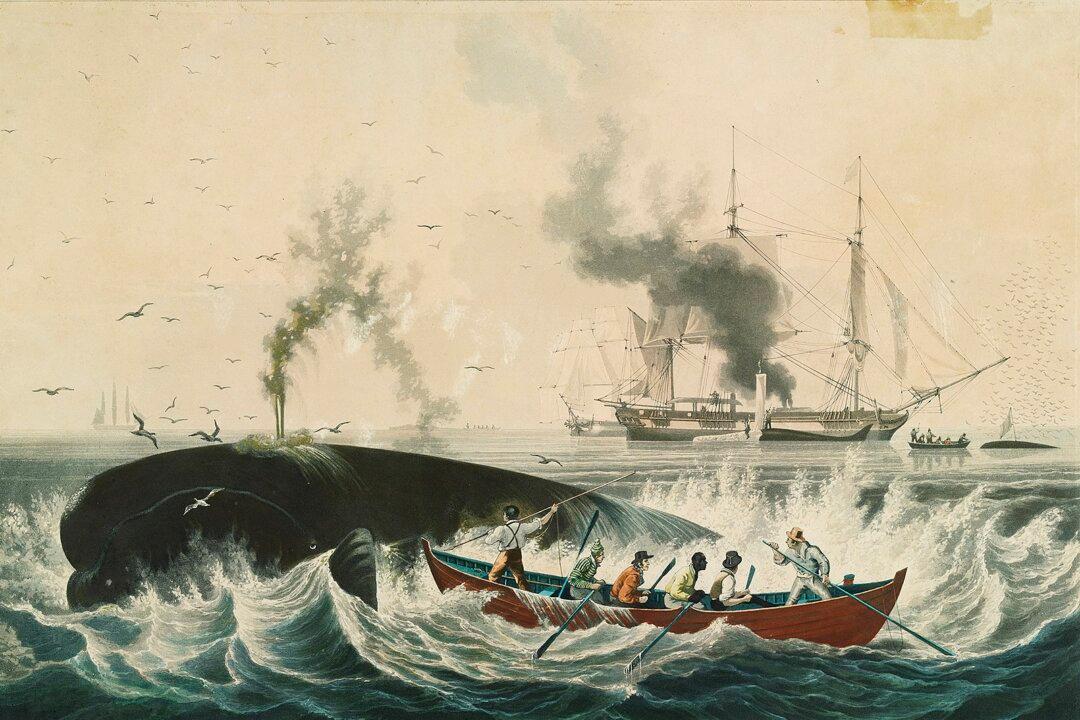At my elbow as I write these words is “Modern English Readings, Fifth Edition,” a college textbook published in 1946 by Rinehart & Company, Inc.
On the first blank page, written in an impeccable hand with a fountain pen, is this claim of ownership: “Mr. & Mrs. James E. Minick, ’46.”
My mom and dad were students at Westminster College in Pennsylvania when they purchased this textbook. Dad had returned the year before after serving as an infantryman in the fighting in Italy’s Po River Valley. After the defeat of the Third Reich, he and thousands like him were slated to join the invasion forces against the Japanese. Then came the atomic bomb, and Dad headed home to marry and go to college.

Like so many of us, I suspect, I wish I’d asked my parents more questions about their past. One minor regret has to do with this textbook. Did they both use it? Did they read the entire book, which runs to 1,062 pages of small print? Why did my father keep the book for 40-plus years?
When I recently stumbled across this book on the shelves in my basement, I carried it upstairs and for the first time really looked at it. The editors were Roger Loomis and Donald Clark, both of Columbia University. I discovered online that Roger Loomis was a medievalist and an expert in Arthurian legends. Donald Clark taught rhetoric and specialized in Renaissance literature.
The Way It Used to Be
Clark and Loomis kick off their Preface with these words:“The editors have been guided in their selection by three aims: (1) The teaching of vital and correct expression through the study of models. (2) The quickening of the student’s interest in literature by giving some of the best fiction, drama, essays, biography, and poetry of the last hundred years to read attentively and to enjoy. (3) An introduction to those problems which, today more than ever, if left unsolved or wrongly solved, mean individual misery and a world in utter chaos.”
A few pages later in their Introductory, the editors offer a short exhortation of encouragement to students as well as this reminder: “Here is a small part of your rich heritage of emotional experience and intellectual insight.”These were scholars and gentlemen who understood the importance of writing and rhetoric, who revered literature, and who realized that solutions to the trials of the postwar era must come in part from gaining a more profound understanding of culture.

Writing
In that pre-digital age, Clark and Loomis recognized that the ability to craft competent sentences and to make an argument using the printed work can spell the difference between success and failure in every endeavor from business correspondence to composing a love letter. “Write,” they tell students, “always with honesty, saying what you have really felt or what you believe to be true. Work always toward greater and greater clarity of thought and expression.”We may neglect composition in our schools, but Clark and Loomis made it paramount in the advice they gave to educators and students. At the end of “Modern English Readings,” they include almost 50 pages of “Student Helps and Theme Suggestions” as aids to students needing assistance in writing. Some modern textbooks—I’m thinking of the ones I used to teach to homeschoolers, particularly for the Advance Placement literature students—offer similar guidelines.
But as Clark and Loomis state, the way to learn to write is by modeling your prose on talented writers and … well, by writing.

Reading
“Modern English Readings” focuses on the literature of the last century as of 1946. Here we find part of a biography of Florence Nightingale standing alongside a sketch of Confederate cavalry leader Jeb Stuart, personal essays ranging from Robert Louis Stevenson’s “Crabbed Age and Youth” to Betty Martin’s “Spring Comes to the Farm,” essays of criticism and exposition, short stories by writers like Stephen Vincent Benét and Willa Cather, six plays, and almost 200 pages of poetry.
Liberty
We living today might turn up our noses at this lack of inclusion, but Clark and Loomis nonetheless produced a textbook in which American values dance and sparkle. They recognized that they were putting together a literary map and compass for a generation of men and women, whether they were veterans or not, works of literature that would give their readers strength, hope, and direction as they walked into the future.At the end of their book, for instance, where Clark and Loomis included a selection of poems about liberty, they raised questions like these in regard to the poems and the themes their students might write. These queries are as pertinent, and perhaps more so, to our own day as they were then:
“What … restraints on liberty of thought and discussion are established by pressure groups which protest against all publications not favorable to their own color, race, or sect?”
“How do foreign governments restrict liberty of speech in the United States?”
“Would you, if you had the power, grant freedom of speech to organizations whose aims you consider evil or would you deny freedom of speech to such organizations?”
In their suggested writing exercises, they recommended: “Write an editorial or letter to the editor protesting some act of censorship of the press, by college authorities, pressure groups, or governmental agencies.”
Education
In “Education for Freedom,” an essay in this textbook, Robert Maynard Hutchins, then president of the University of Chicago and outspoken advocate of the liberal arts and a Great Books curriculum, made many points pertinent to education today. He argues, for instance, that when university students are treated like adults, they behave “like adults, or rather in the way adults ought to behave.” He makes the vital point that “the cultural heritage of America is the civilization of Western Europe. The means of understanding it is the liberal arts, the arts of reading, writing, speaking, and calculating.” This sort of education, he contends, is an “education for freedom.”Their selections for “Modern English Readings” tell us that Clark and Loomis clearly agreed with Hutchins.
If we consider my father and the millions of American women and men like him, we see a generation hard hit by the Great Depression and then called upon to fight in the deadliest war the world had ever seen. But we also see a generation that emerged from these ordeals, built America into the most powerful nation in the world, worked hard, married, and raised families.
“What the world needs, what this country must have,” Hutchins wrote, “is free minds. … It means minds committed to the good by good moral and intellectual habits. It means minds informed by principles derived from human experience through the ages, minds that will operate well no matter what waves of change beat upon them.”
True then.And just as true now.






